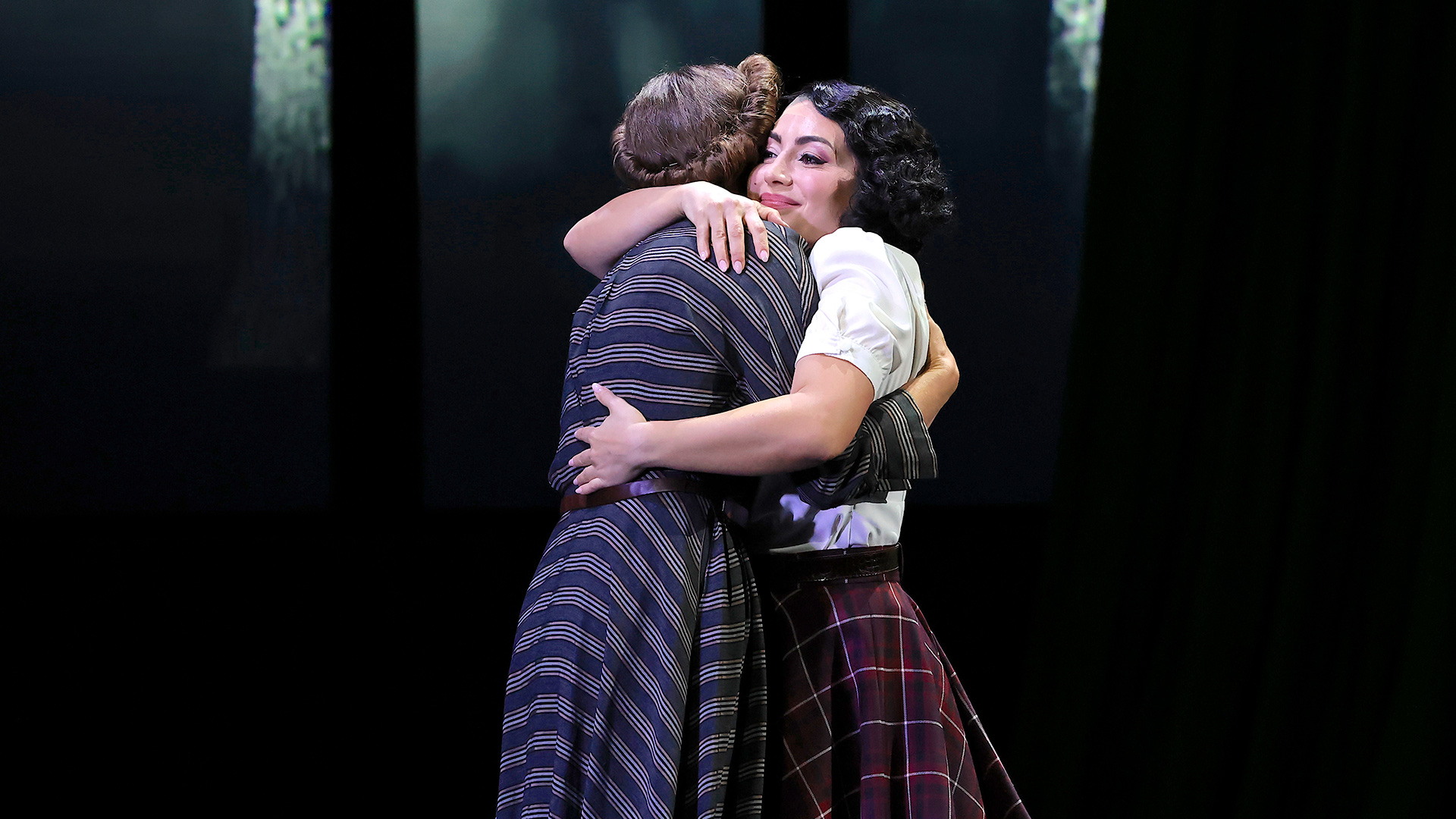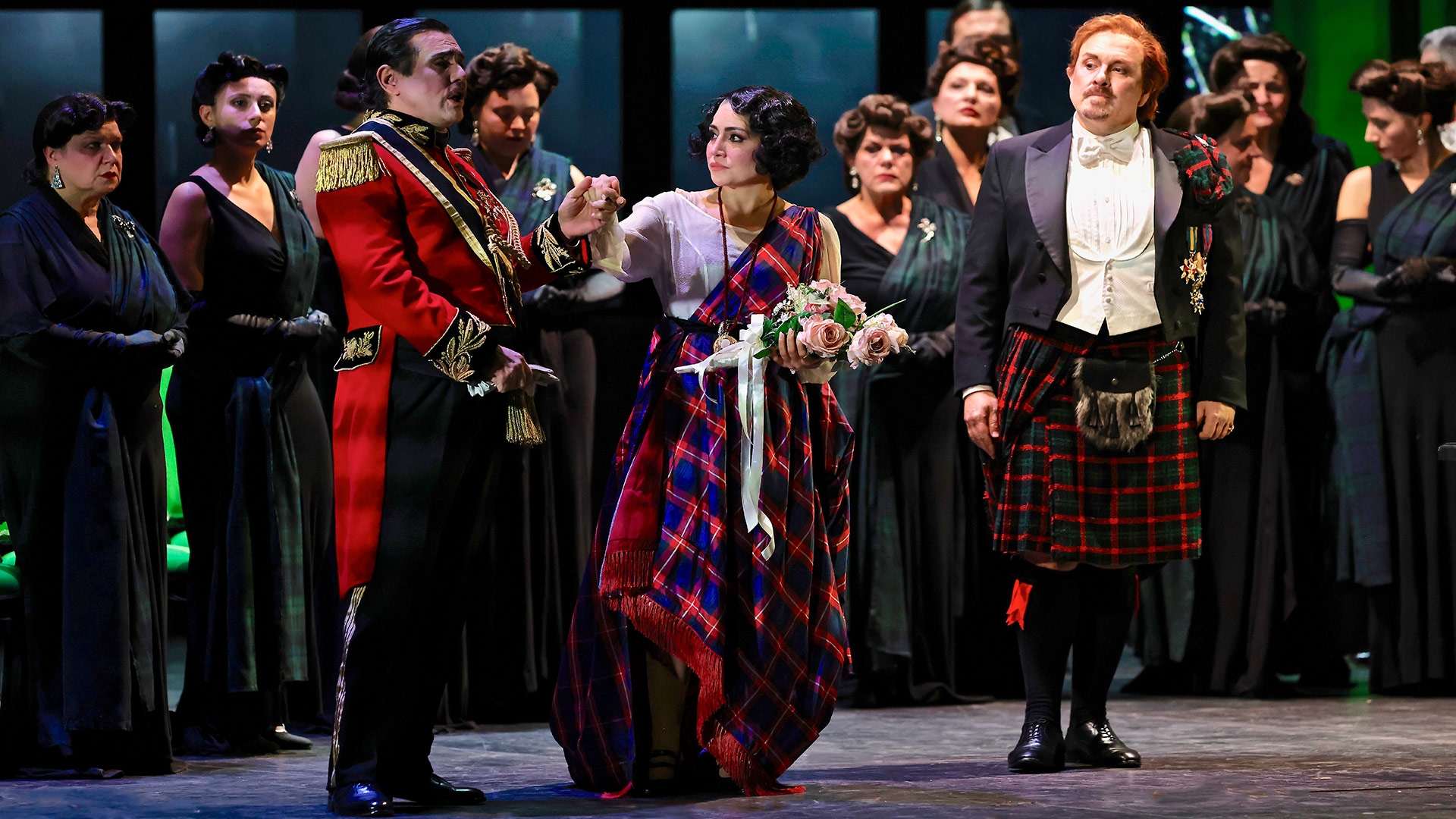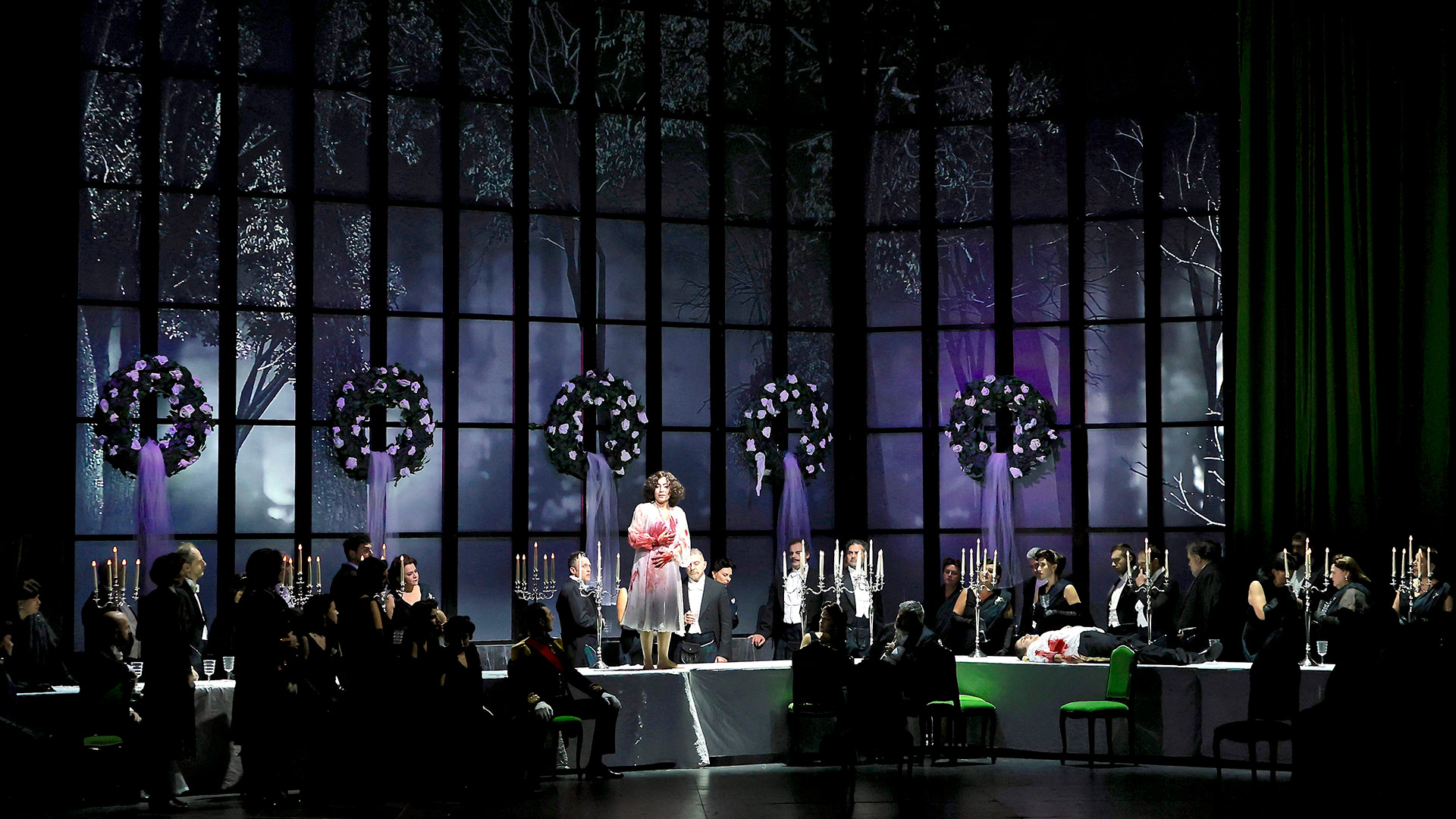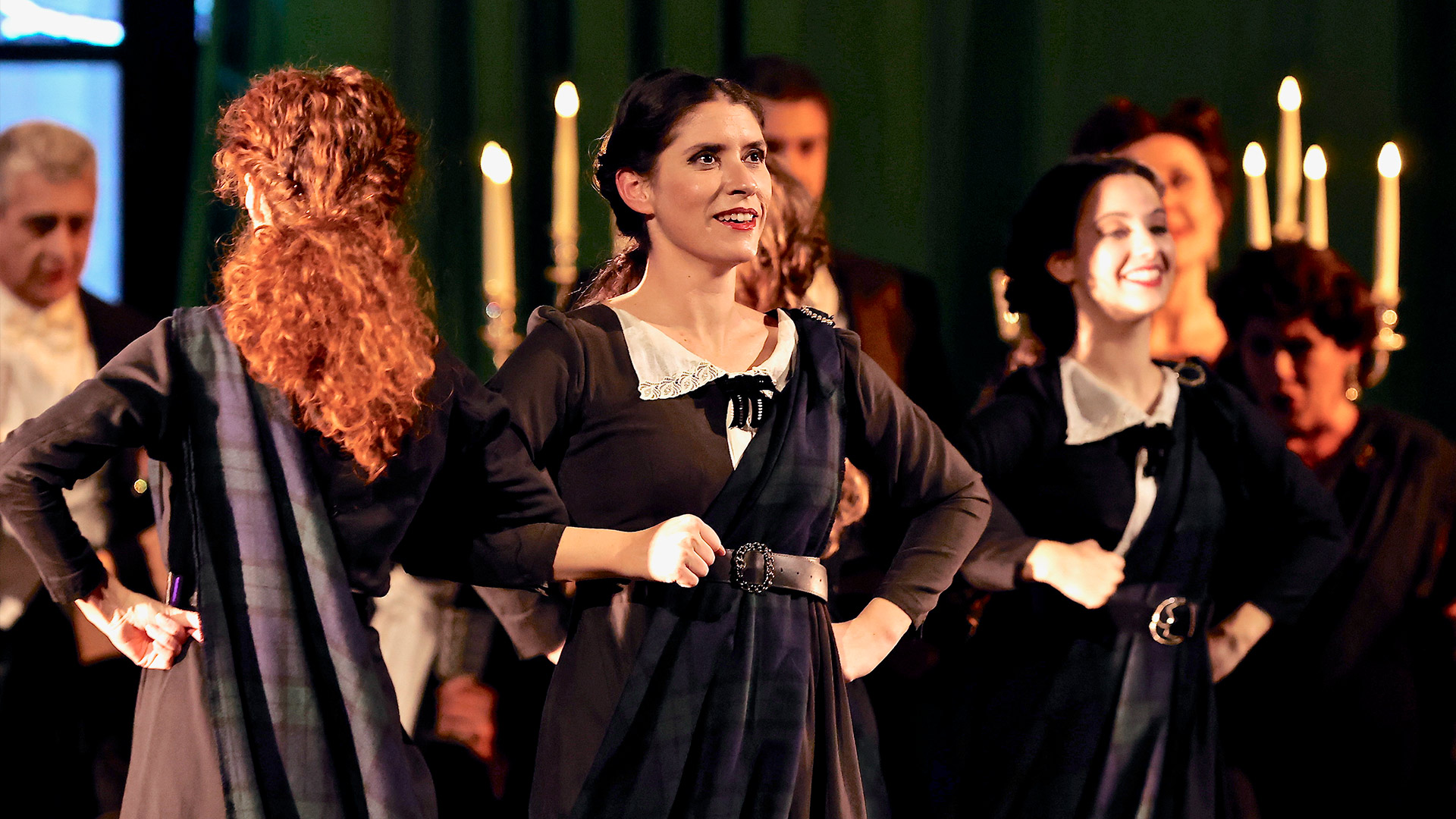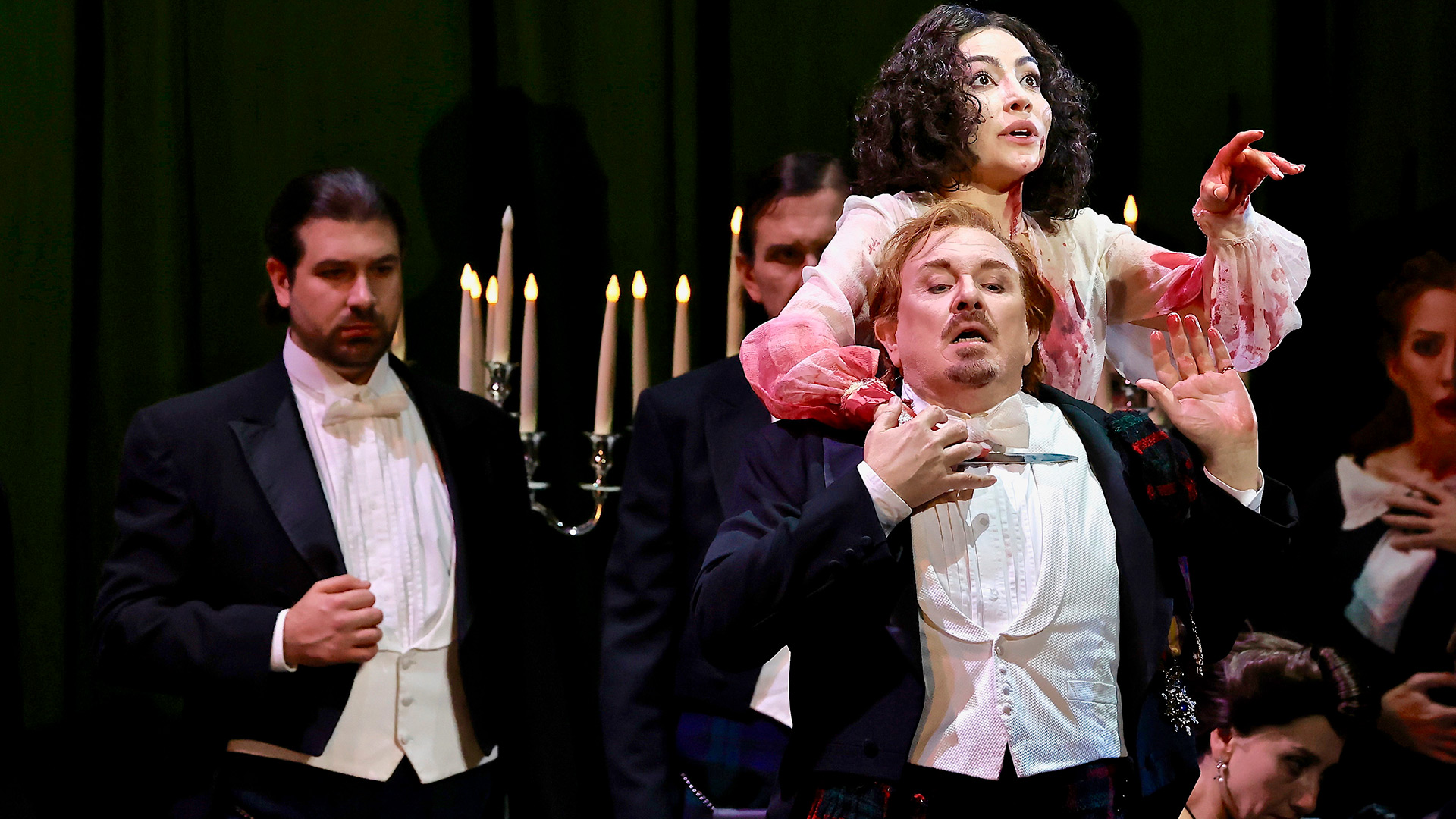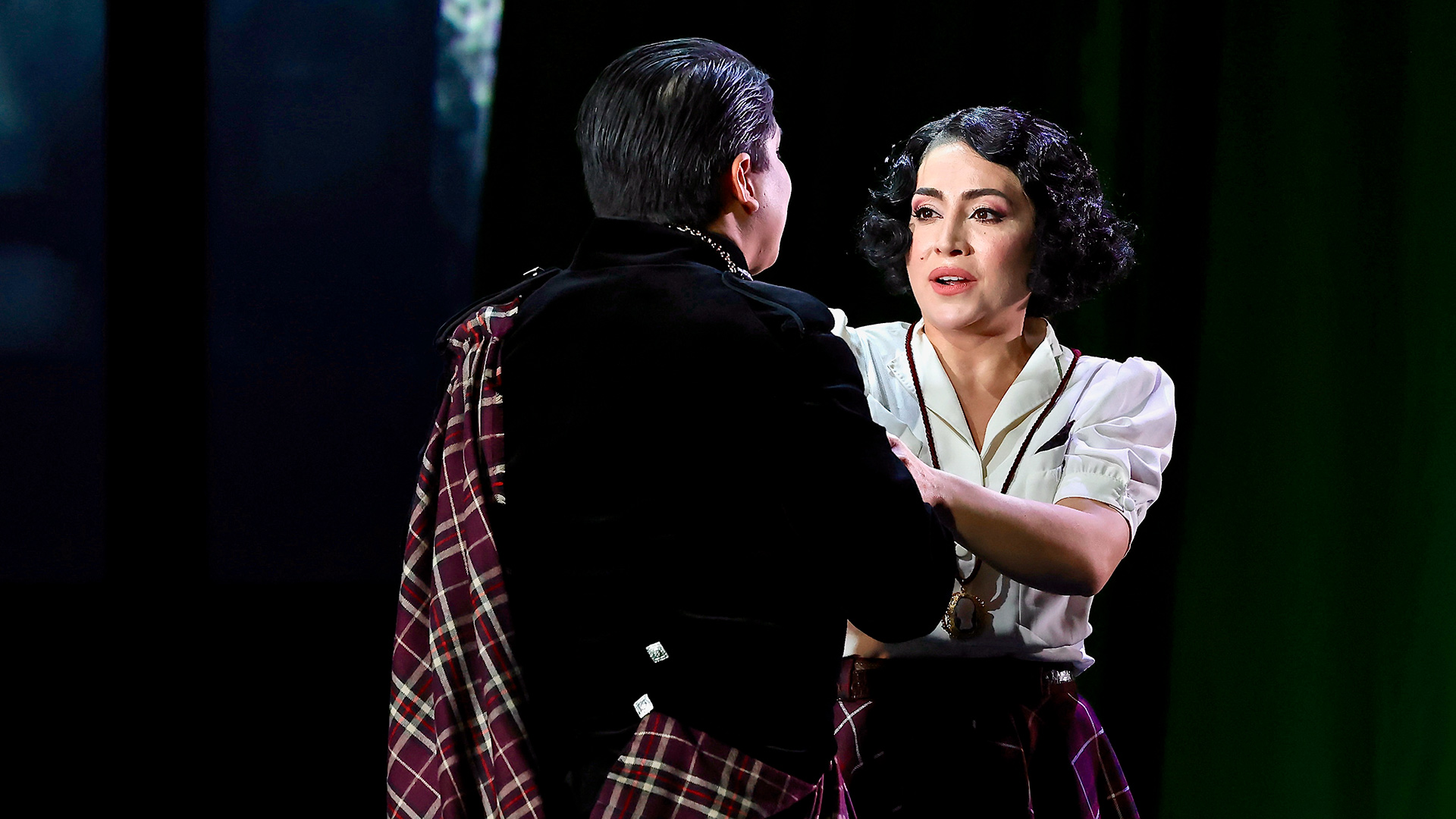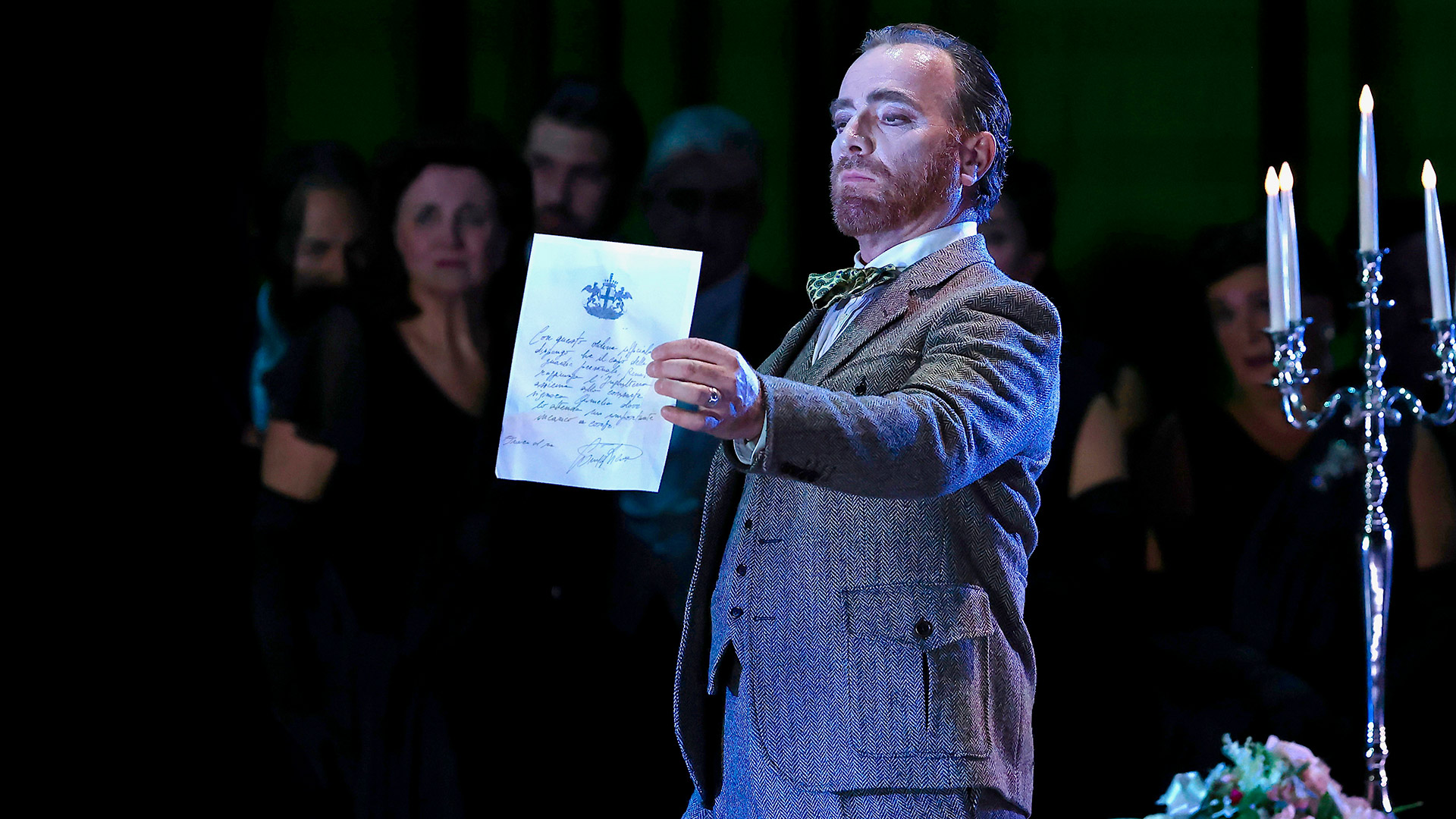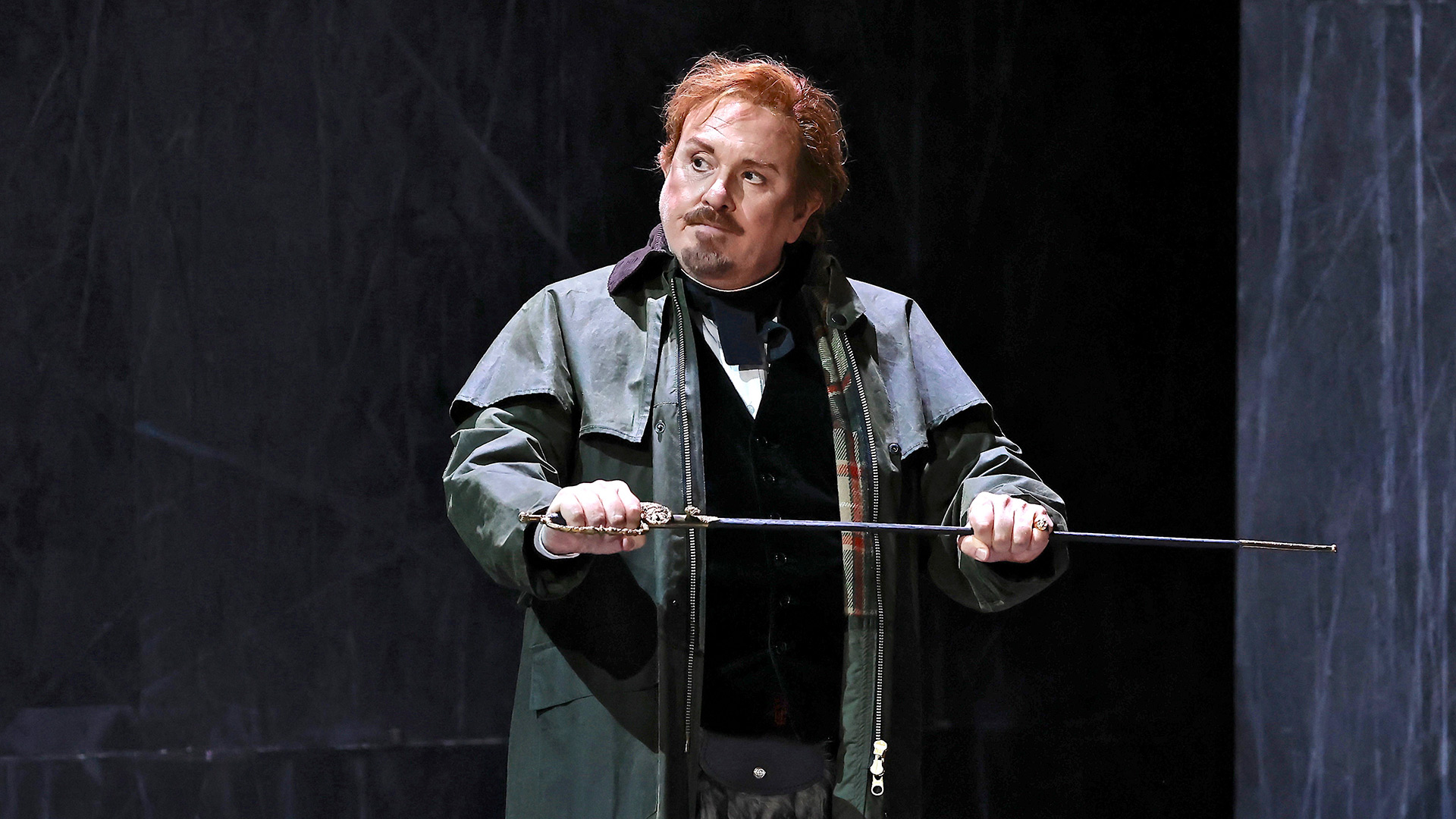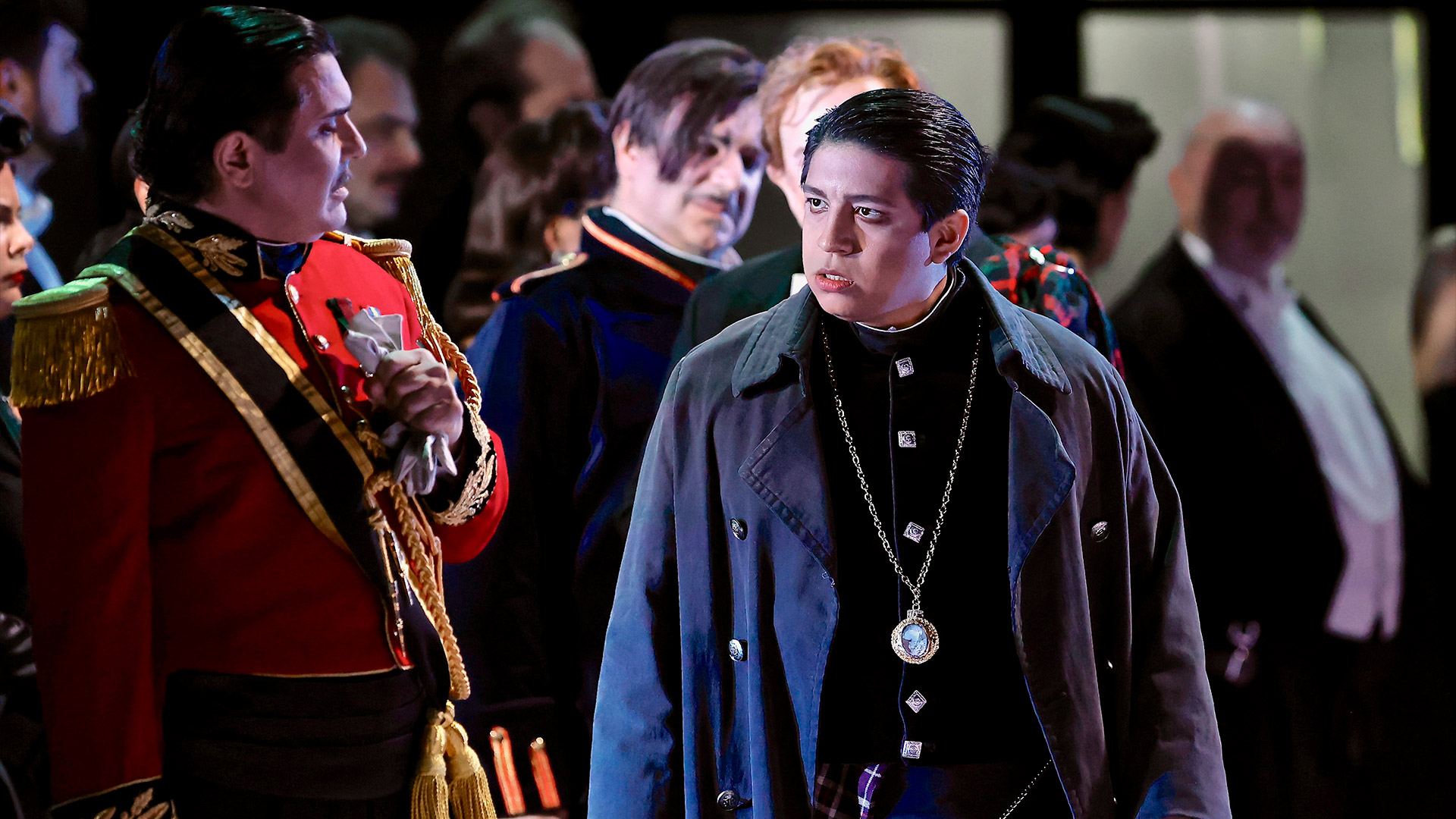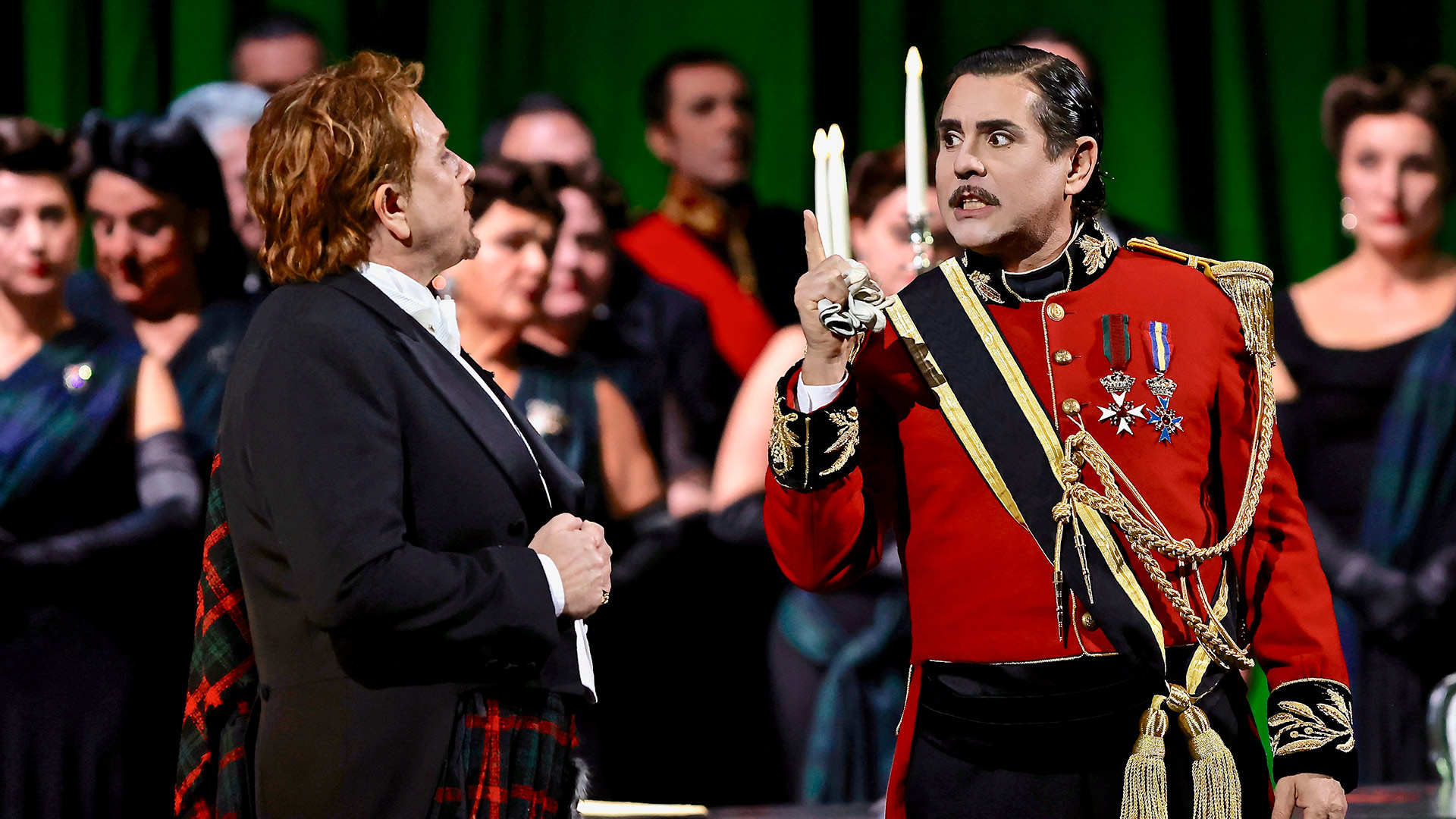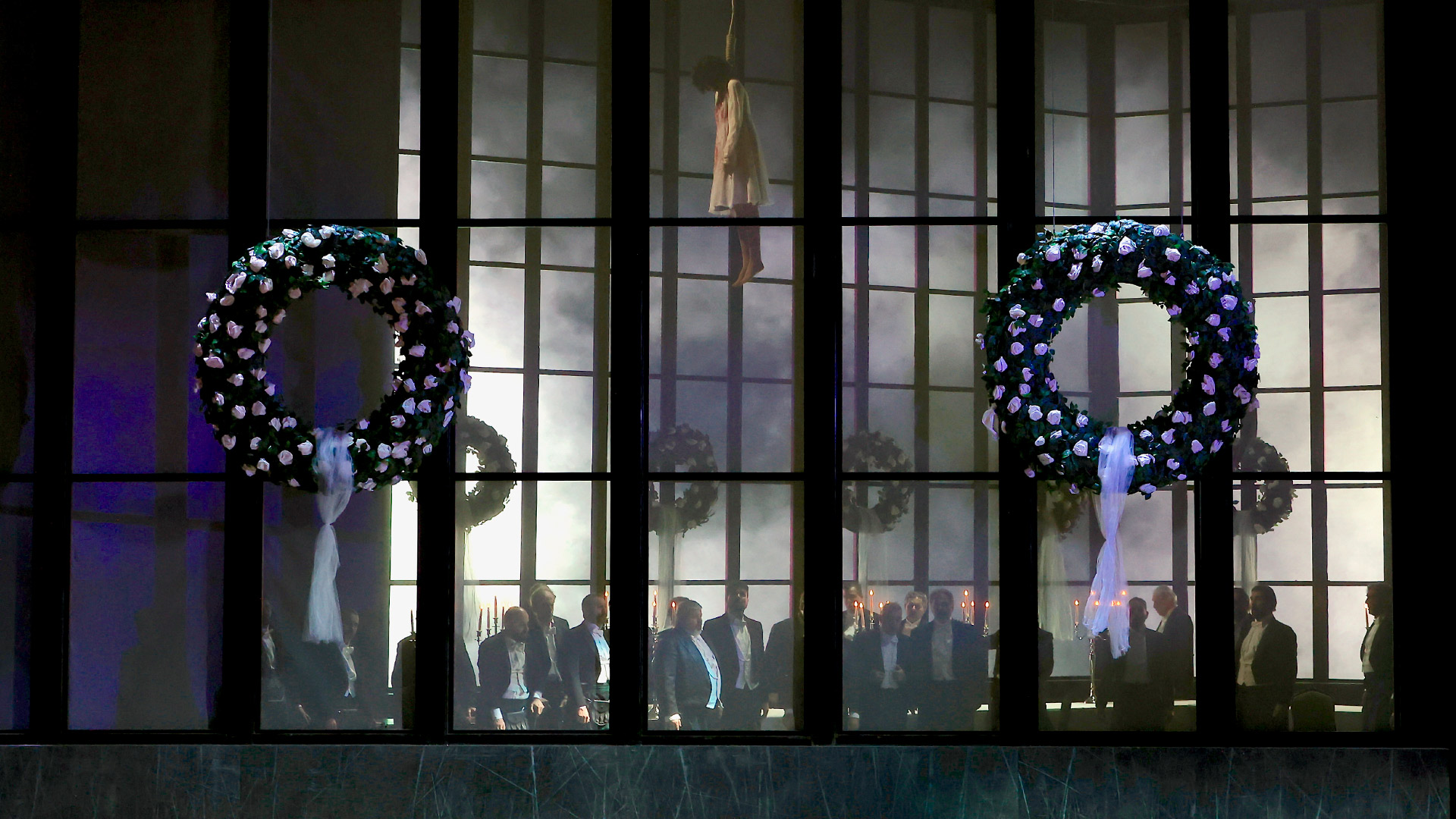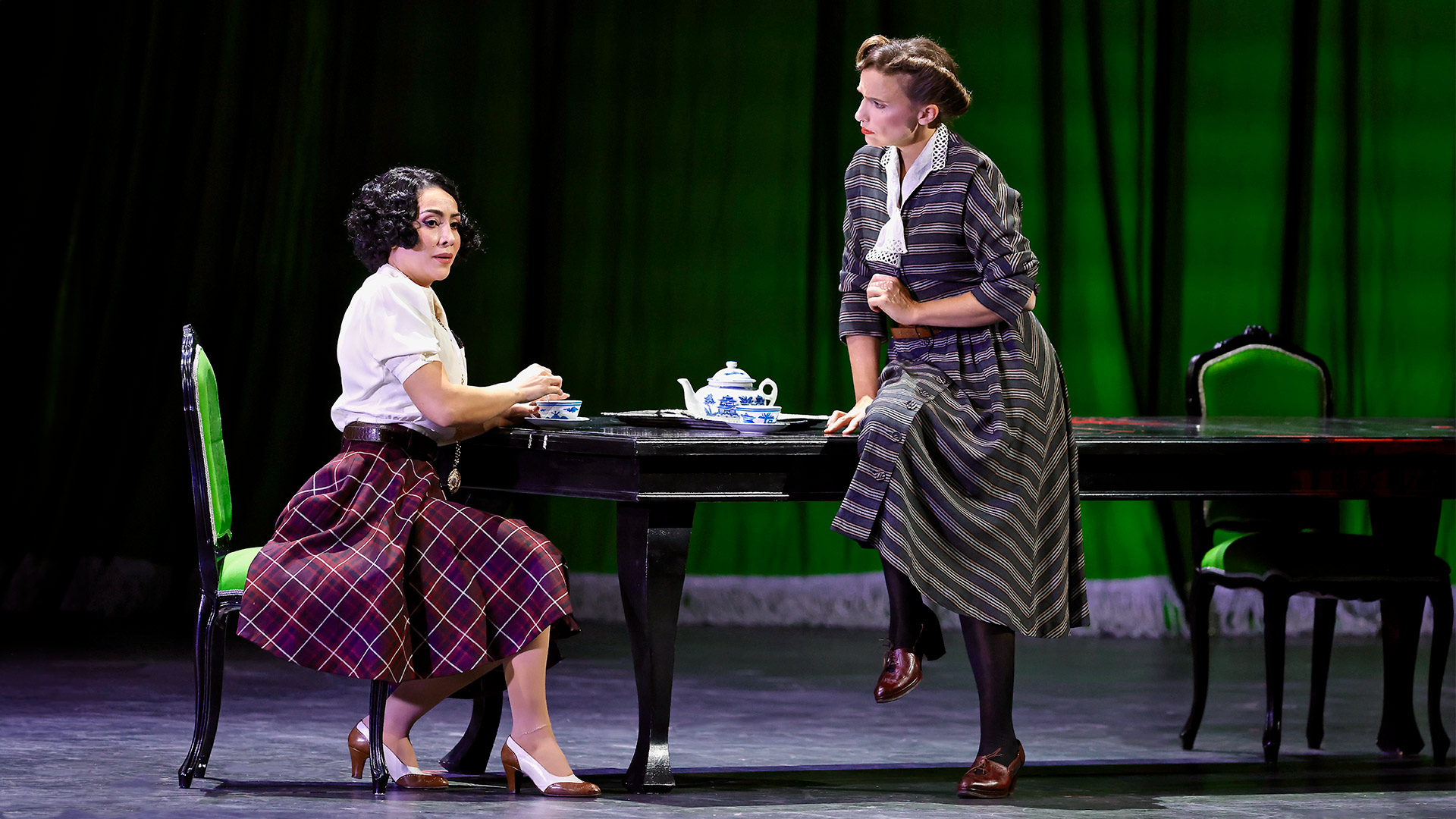Tragic drama in three acts by Gaetano Donizetti, libretto by Salvatore Cammarano from the novel The Bride of Lammermoor by Walter Scott
Staging by the Fondazione Teatro Carlo Felice di Genova in co-production with the Fondazione Teatro Comunale di Bologna and the ABAO-OLBE of Bilbao
Characters and interpreters:
Enrico
Franco Vassallo
Lucia
Nina Minasyan
Edgardo
Iván Ayón Rivas
Arturo
Paolo Antognetti
Raimondo
Luca Tittoto
Alisa
Alena Sautier
Normanno
Manuel Pierattelli
Concertmaster and conductor
Francesco Ivan Ciampa
Director
Lorenzo Mariani
Scenes
Maurizio Balò
Costumes
Silvia Aymonino
Lighting
Marco Filibeck
Video
Fabio Massimo Iaquone and Luca Attilii
Orchestra, Chorus and Technicians of the Opera Carlo Felice Genova
Chorus Master Claudio Marino Moretti
Figurants
Diana Dallera, Daniela Palladino, Linda Piardi, Anastasia Crastolla, Simone Campisi, Davide Riminucci, Fabrizio Carli, Martino Ambrosini
Stage Director
Luciano Novelli
Stage musical director
Simone Ori
Hall Masters
Sirio Restani, Antonella Poli
Stage Masters
Andrea Gastaldo, Anna Maria Pascarella
other Choir Master
Patrizia Priarone
Lighting Master
Luca Salin
Master of supertitles
Simone Giusto
Assistant director
Christian Rivero
Music archive manager
Simone Brizio
Stage director
Alessandro Pastorino
Console Handling Manager
Andrea Musenich
Engineer foreman
Gianni Cois
Foreman electricians/lighting booth
Marco Gerli
Tooling foreman
Tiziano Baradel
Head of audio/video department
Walter Ivaldi
Head of tailoring, shoemaking, make-up and wigs
Elena Pirino
Make-up and hair co-ordinator
Raul Ivaldi
Sets and props
Fondazione Teatro Carlo Felice
Fondazione Teatro Comunale di Bologna
ABAO-OLBE di Bilbao
Costumes
Low Costume
Calzature
Pompei
Wigs
Mario Audello
Supertitles
Fondazione Teatro Carlo Felice
Opera in brief
by Ludovica Gelpi
When Donizetti began work on Lucia di Lammermoor in May 1835, he had more than fifty musical theatre works to his credit. As was often the case with the busy composer from Bergamo, the time available for the realisation of the new project was very limited. The choice of subject fell on Walter Scott’s The Bride of Lammermoor, published in 1819 and already the inspiration for several musical transpositions. Donizetti worked on his adaptation together with librettist Salvatore Cammarano in just two months, and Lucia di Lammermoor was completed in July of the same year. The first performance took place at the San Carlo Theatre in Naples on 26 September, with Fanny Tacchinardi and Gilbert Duprez in the parts of Lucia and Edgardo. The highly technical interpretation offered by Tacchinardi was one of the reasons for the immediate success of the opera, which immediately began to circulate with a very warm reception, and has been considered Donizetti’s greatest serious masterpiece ever since.
Lucia di Lammermoor encapsulates several elements that make it a true emblem of operatic romanticism. The setting – Scotland, 16th century – has dark and mysterious hues, the social context is troubled by strong political tensions, and from the outset the main inner contrasts of the individual characters emerge (according to patterns very much rooted in the 19th century bourgeois dimension that inspired musicians, artists and writers of the time such as Scott, Donizetti and Cammarano). The theme of madness finds its dramaturgical heart in the character of Lucia, written both narratologically and musically with a rare expressive intensity. Lucia is presented as a fragile girl, shaken by the recent loss of her mother and deeply in love with an impossible love. Her detachment from reality is foreshadowed shortly after her first appearance, when she confesses to the damsel Alisa a vision of the ghost of a maiden, her alter-ego, who died at the hands of one of Edgardo’s ancestors. As it unfolds, Lucia gradually descends into a spiral of madness, as a defence mechanism for that same great fragility in the face of unbearable family pressures and the presumed loss of her own love, to the point of revealing the most violent part of herself with the murder of her new husband Arturo (of a terrible violence made even more enigmatic and unmentionable by the fact that it takes place offstage). Enrico is an irascible and selfish brother and head of the family, and tries to exploit Lucia’s frailty for his own political interests until her madness backfires on him. Edgardo is reckless and determined, but in turn fragile and ultimately self-destructive. Raimondo and Normanno support the main trio in an antithetical way, the former trying to settle discord, the latter helping to fuel it. The amplifying effect of the tension given by the strong presence of the social sphere surrounding the protagonists, with the armigers, servants and servants of Ravenswood Castle and the inhabitants of Lammermoor, is also very important.
The narration and dramaturgical development are very dense but linear – Cammarano’s work on Scott’s text was precisely aimed at bringing to light its essential features without limiting, indeed enhancing, the dramatic and romantic charge of the original novel – the same happens with Donizetti’s musical writing, profoundly expressive but also direct and supported by a ‘classical’ formal structure. The search for greater verisimilitude that Donizetti was carrying out at the same time as other composers such as Bellini and Verdi (a search that would lead to the birth of modern melodrama) proceeds in the vocal lines. At the same time, however, the part of Lucia stands out, whose line is richer and more articulate, with a deliberately abstract effect precisely to emphasise an inner dimension that is profoundly different from those of the other characters. Lucia di Lammermoor is an opera of singular compactness and great emotional impact, and it is the unique blend of these two elements that makes it one of the main archetypes of 19th century opera.
